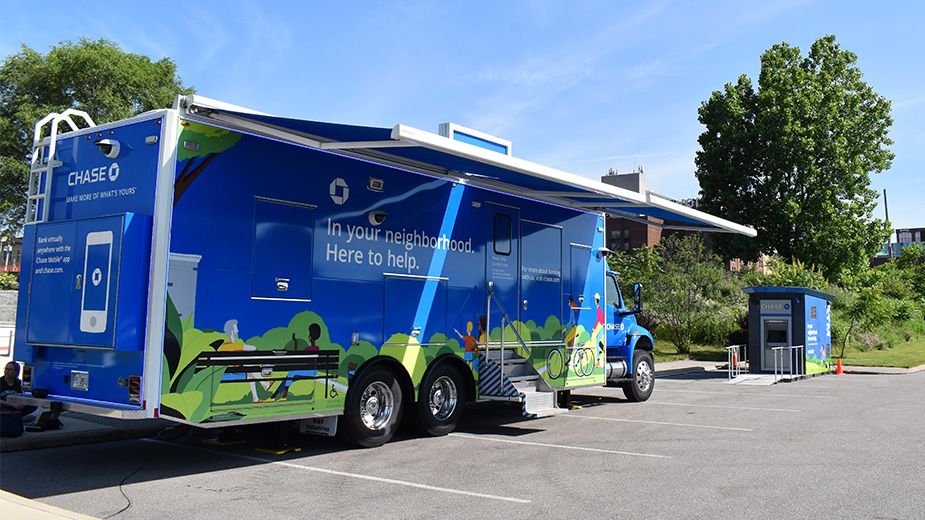Credit Union CEOs Tell How They Compete with Banks
YOUNGSTOWN, Ohio – The number of credit unions in Ohio has fallen to 317 as of June 30 from 479 five years ago.
The CEOs of the two largest in the Mahoning Valley, Gary Soukenik of Seven Seventeen Credit Union, Warren, and Mchael Kurish of Associated School Employees Credit Union, Austintown, agree that the number is likely to fall further with the large credit unions absorbing more small ones.
Where the assets of the average credit union in the United States are $188 million, in Ohio it’s $81 million. “The definition of a small credit union has changed, Kurish observes.
Keeping their independence is a sensitive subject for small credit unions. Presidents of smaller credit unions in the Mahoning Valley that we approached declined to discuss the future of their small financial collectives. One who did agree – reluctantly – called back 15 minutes later to say he had reconsidered after discussing it with a longtime director.
Seven Seventeen, which Soukenik projects will reach $900 million in assets by year-end, has grown through acquisition but more so through internal growth. “Most of our growth has been organic,” Soukenik says, which he sees as the path to increasing Seven Seventeen assets to $1.2 billion by 2020.
“The largest [acquisition] was an $8 million credit union,” the CEO says. “In any month, we can grow that much organically.”
Nov. 1 is the scheduled date for Seven Seventeen to complete its acquisition of the Kent Credit Union, which has $45 million in assets.
ASECU, which has $147 million in assets, has grown through acquisition and internally. In 2009, it acquired the Greater Warren Community Credit Union, which had three offices, and Cavalier Credit Union, to give it seven offices in Trumbull and Mahoning counties.
Because Seven Seventeen is a state-chartered credit union (although federally insured}, “We must stay in Ohio,” Soukenik explains. It would have to obtain a federal charter to expand in another state.
Given their asset size, Seven Seventeen and ASECU can be most things to most of their members. Asked if there were any products or services for which a member would have to visit a commercial bank, Soukenik answered, “I can’t think of any.” He went on to point out that his credit union routinely provides services banks rarely offer their everyday customers.
The Seven Seventeen “Simply & Save” program, begun in 2011, has saved its members $36 million in interest and fees though credit counseling, debt consolidation where they refinanced higher-interest loans, and helping families establish budgets and stick to them.
“Operationally, we’re very much like a bank,” he says. “Philosophically is where we differ. … We’re a democratically run institution, run for and by the members. Here it’s one vote per member,” regardless of how much they have on deposit.
Where Seven Seventeen has a dedicated commercial lending department, ASECU does not although Kurish knows some of his members use his credit union as the chief source of financing for their business, lawn services and beauty salons, to name two.
The expense of providing the electronic delivery channels most commercial banks offer – ATMs, online banking, through smartphones – is expensive, Kurish and Soukenik say, and essential to attracting and keeping young members.
The older small credit unions can’t afford the investment and the makeup of their membership reflects this limiting factor. Their memberships tend to be well into middle age and older. Many are retired and either uninterested in, or uncomfortable with, online banking and using a smartphone to make deposits, pay bills or to track their finances.
“The emotional attachment members have to their credit unions can’t be overstated,” Kurish says.
Soukenik agrees, noting that belonging to a credit union is as much an emotional commitment as enjoying the financial benefits. Because credit unions are nonprofit institutions, industry spokesmen are fond of noting that they reward their members with slightly lower rates on loans and pay slightly more interest on savings products.
“Many [small] credit unions have found a niche to get around the cost of [offering] new technology,” Soukenik says, which usually includes better rates.
If their credit union doesn’t offer a product, members either do without or go to a bank. One very small credit union we approached does not offer checking accounts.
Also making it more challenging for small credit unions to stay open is the expense of complying with the increasing number of regulations.
The regulatory burden, both Soukenik and Kurish say, is a significant factor in smaller financial institutions – whether banks, thrifts or credit unions – seeking suitors with the wherewithal to fill their customers or members’ needs. They simply can’t afford the manpower required to complete the blizzard of new reports required.
“The regulatory mentality is one-size-fits-all, Soukenik says. Since 2008, he relates, 15 federal regulatory agencies have imposed 198 new regulations on the financial services industry, which fill 15,000 pages in the Federal Register. “We have to read every one, share it with our staff and get new forms. Sometimes an amendment comes out before [the new regulation] takes effect.”
All credit unions face the challenge of finding members qualified to replace the veteran directors close to stepping down. Regardless of size, turnover in the boards is minuscule. Laws governing credit unions require that boards be made up of volunteers where banks boards are compensated financially.
Both Kurish and Soukenik admire the commitment their boards have shown but the time required in overseeing a larger financial institution imposes more demands.
The responsibility for ensuring all the regulations are met “has made it more difficult to recruit volunteers,” Soukenik says. “There are more committee meetings.
It’s more complicated and cumbersome than it was 60 years ago, Kurish agrees, when the original board debated whether to lend an Austintown teacher $50 to buy tires for his car.
Editor’s Note: International Credit Union Day is celebrated annually on Oct. 15.
Copyright 2024 The Business Journal, Youngstown, Ohio.


